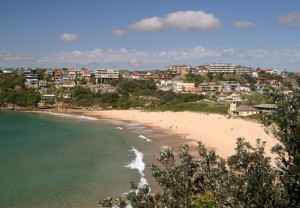Australia green cities plan
21 February 2016 by News DeskAustralia has set itself bold targets to ensure that all capital cities reduce their carbon emissions by using ‘green’ energy instead.
 Australia must reduce greenhouse gas emissions to around 28% of 2005 levels by 2030. It is now investing billions of dollars in renewable energy sources such as solar, tide and wind power.
Australia must reduce greenhouse gas emissions to around 28% of 2005 levels by 2030. It is now investing billions of dollars in renewable energy sources such as solar, tide and wind power.
Australia: Local governments in all the country’s capital cities have energy-efficient schemes in place including lighting in council run buildings.
Lighting is responsible for 40% of local authority emissions.
Capital cities are also all rolling out energy-saving refits of council-owned buildings and turning to ‘green’ public transport.
Melbourne aims to be the first zero-net emissions city by 2020. It has the largest concentration of green buildings of any Australian capital city, with 138 green star-rated buildings. It has spent $14.8m to replace traditional street lights with LED lights, a move that will save the city $1m a year. It aims to use 25% of its energy from renewable sources by 2018. And it will buy 120-gigawatt hours of energy from new industrial solar and wind farms.
Sydney seeks to reduc the greenhouse gas emissions across the entire local government area by 70% by 2030. The council became the first carbon-neutral council in Australia in 2011.
It has introduced a range of initiatives including a $7m LED replacement program saving $800,000 a year while reducing emissions; a $6.9m council-owned building retrofit program, which is saving an estimated $1.1m a year in electricity bills; and the Better Buildings partnership which has reduced buildings emissions by 45% since 2006 and saved $36m in bills.
The city’s Energy Efficiency Master Plan aims to reduce carbon emissions by two million tonnes a year by 2030 and save more than $600m.
Brisbane city council already uses 100% green energy (from solar, wind and waste sources) and says it will become carbon neutral by 2031.
Perth aims to reduce emissions by 32% by 2031. Hobart says it will reduce emissions by 17% of 2010 levels by 2020.
The Australian Capital Territory and Adelaide are both seeking to achieve carbon neutrality by 2020.
Last year, Adelaide city council and the government of South Australia announced that they were working in partnership to make the state capital a carbon neutral city by 2025. The Council allocates 1% of total rates to its Climate Change Action Initiatives Fund. In 2015/16 this is $932,000.
The program aims to bring $10bn of low-carbon investment to the state and save a million tonnes of greenhouse gas emissions each year.
The state has plans to help with conversion costs so people who install energy-efficient devices can claim back some of the costs, from $240 for an energy-monitoring system to $10,000 for installing solar panels.
“If you’re a skilled worker in the green energy industry you could be living the dream down under,” says Darrell Todd, CEO of thinkingaustralia.
Want to live and work in Australia? Click here for more info: Skilled Migration
Click here for tourist info about Australia: Visit Down Under

 Australia must reduce greenhouse gas emissions to around 28% of 2005 levels by 2030. It is now investing billions of dollars in renewable energy sources such as solar, tide and wind power.
Australia must reduce greenhouse gas emissions to around 28% of 2005 levels by 2030. It is now investing billions of dollars in renewable energy sources such as solar, tide and wind power.
